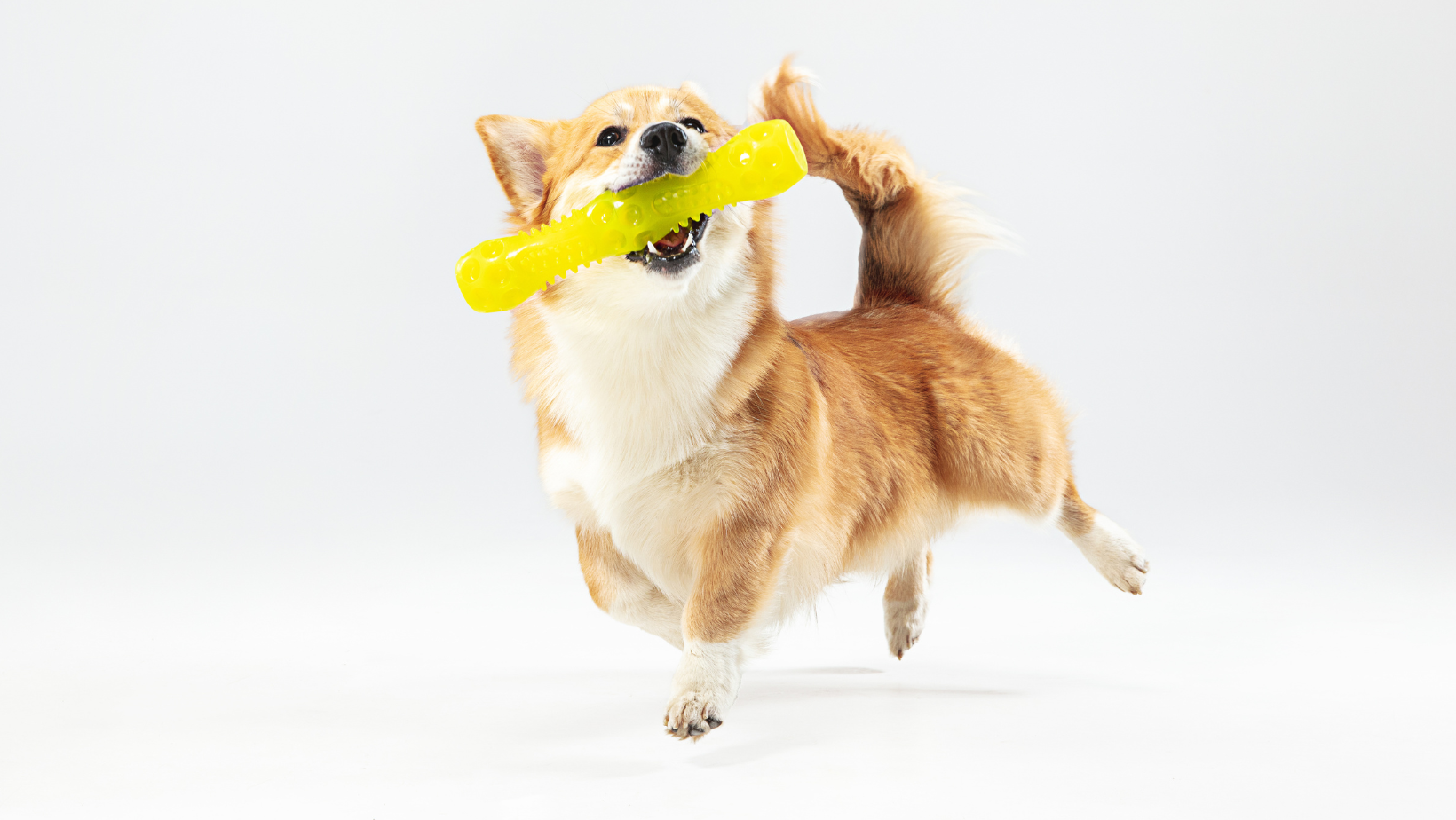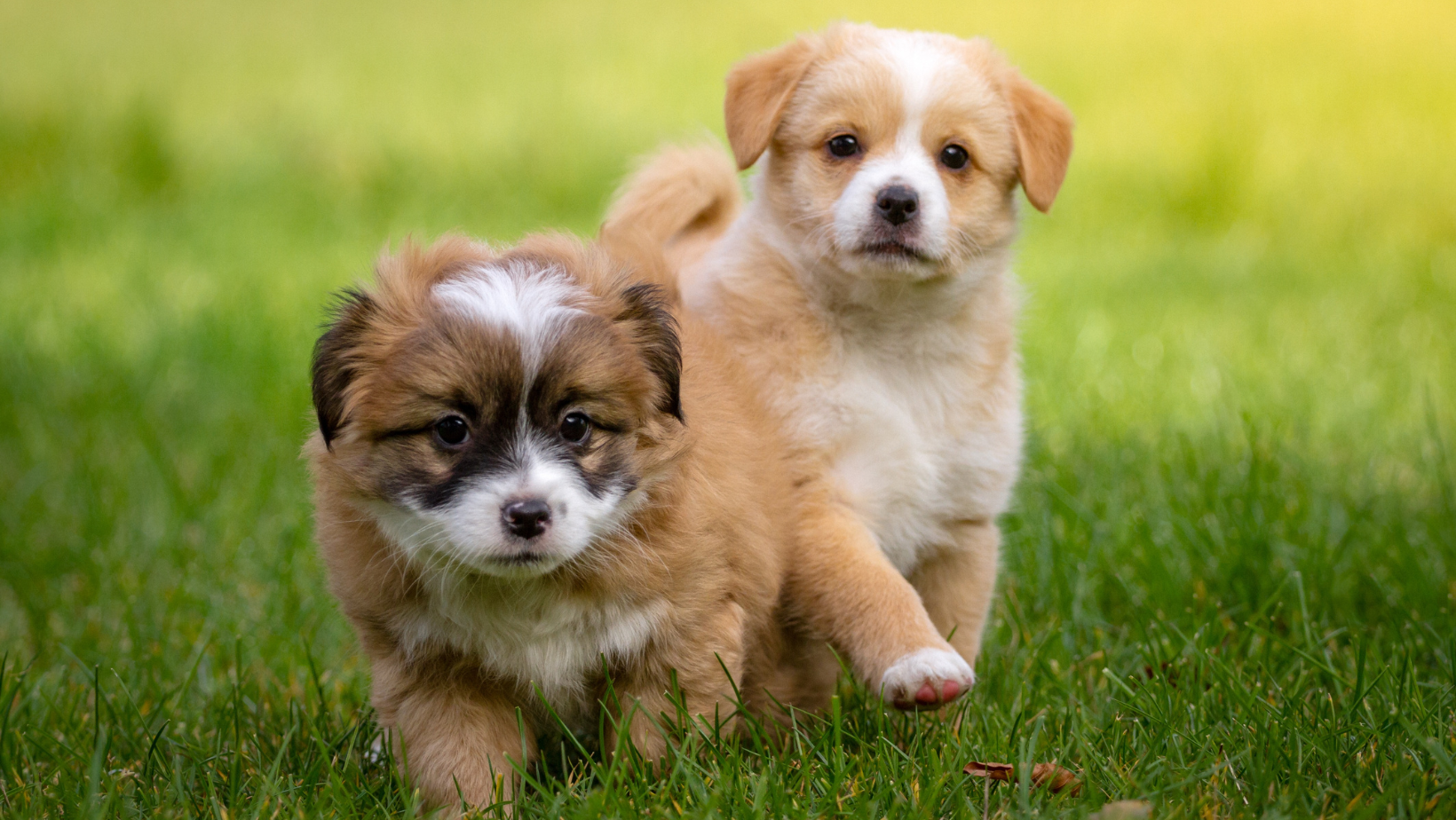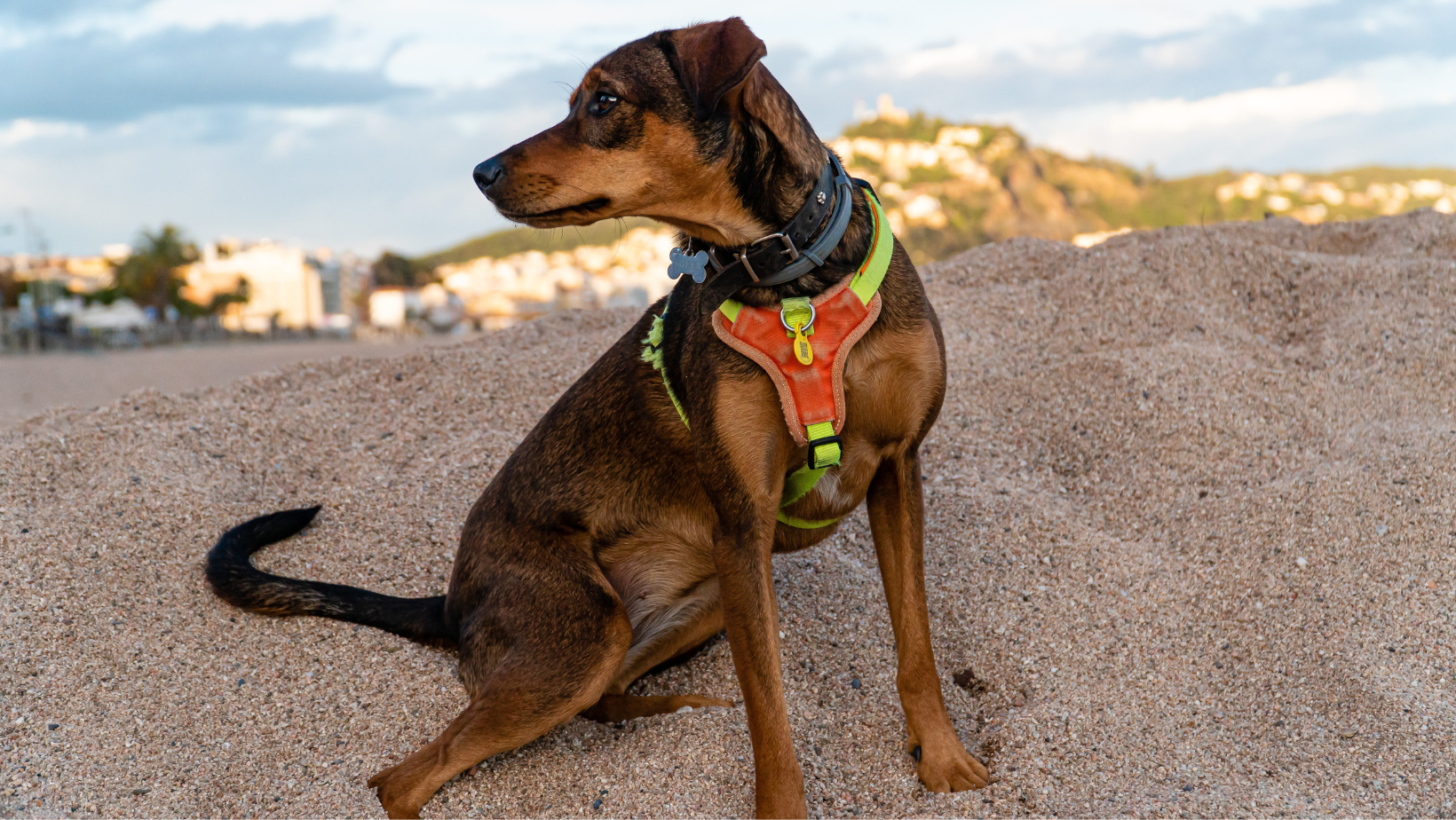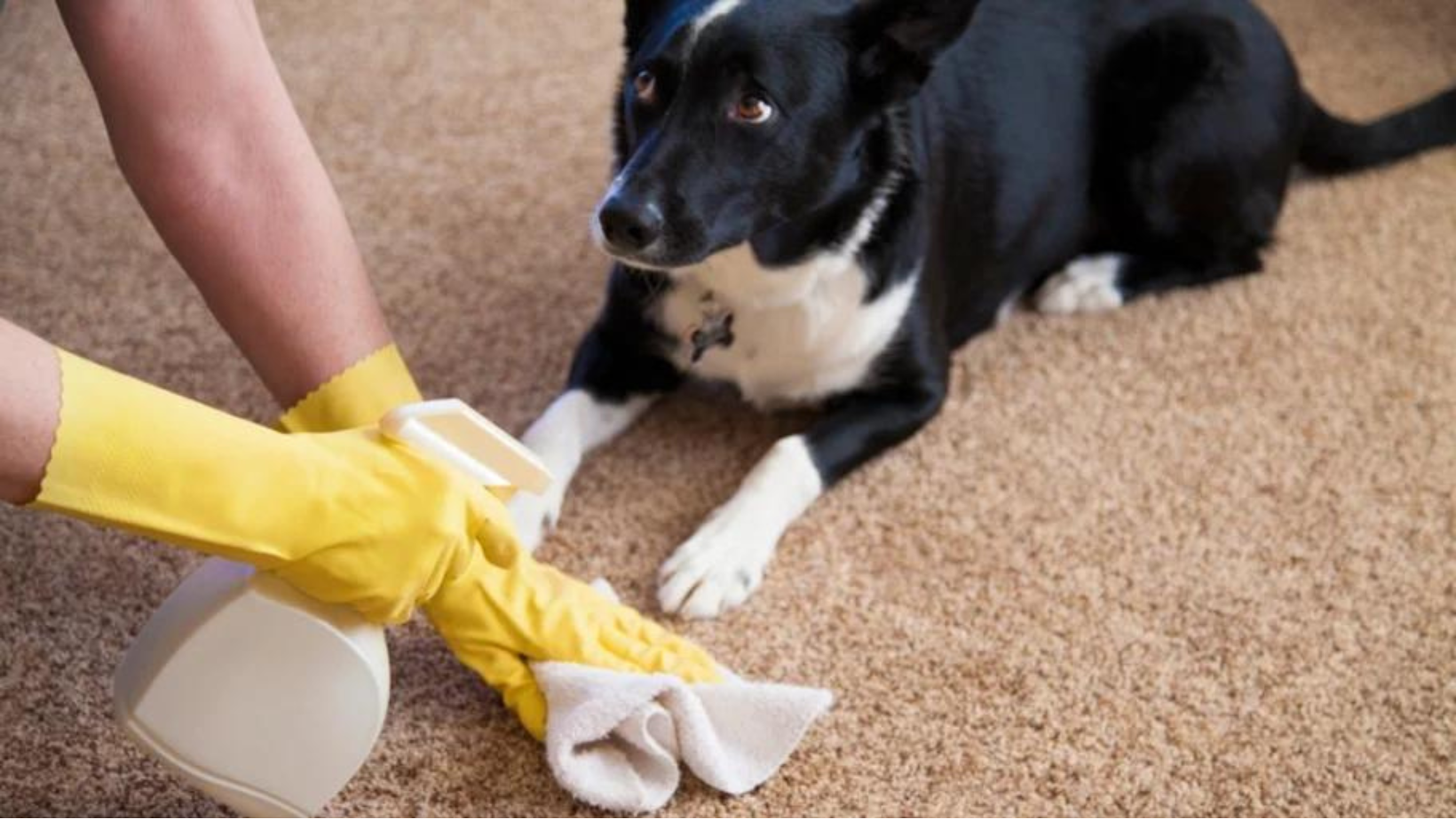Hand Signals Stage 3- Dog Training
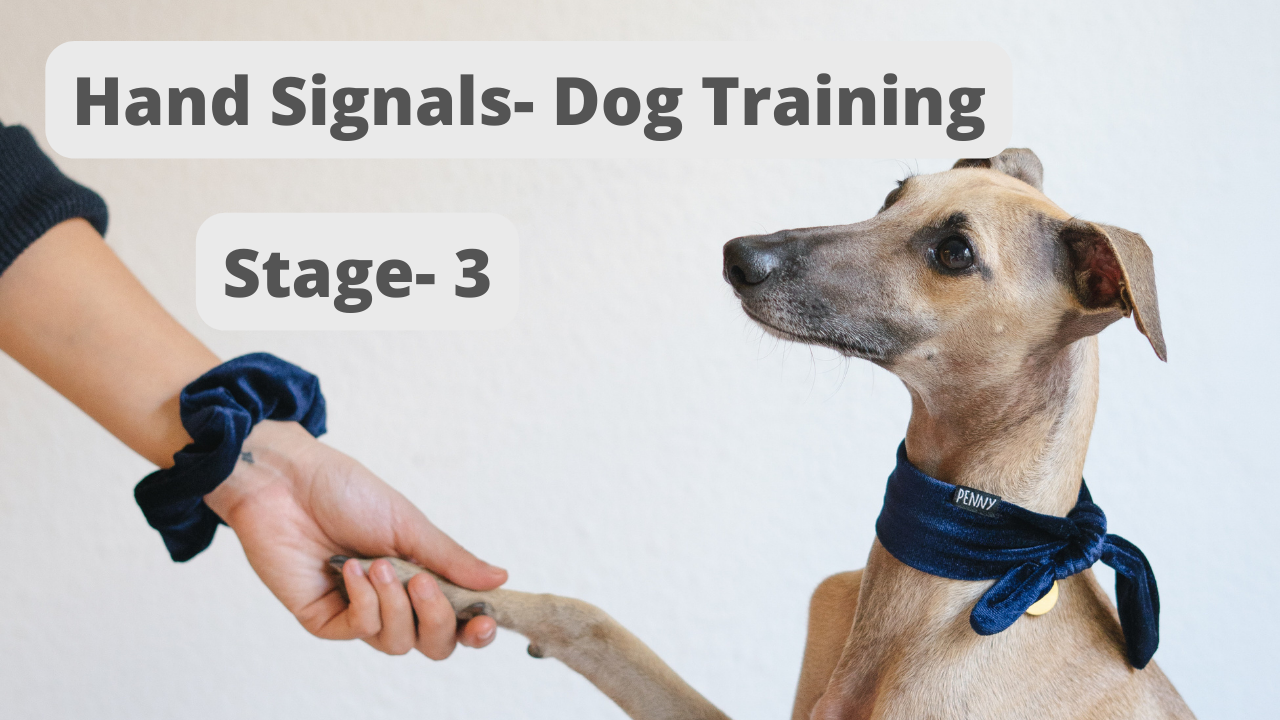
No Treat in the Signal Hand
You should only move on to stage 3 hand signals once your dog is by and large ignoring the treat in your
signal hand, since she now knows that the treat reward will be coming from the opposite, hidden hand.
In stage 3, you remove the treat from your signal hand altogether. You still use that hand to give the hand
signal while saying the command, but you only deliver the treat from the other hand. At this point your dog
will be cuing on the signal hand and assuming that a treat will be delivered from the other hand. In other
words, she will have begun to understand hand signals, and she will understand the words “sit,” “down,” and
“stand” as separate, stand-alone concepts rather than as part of a rote routine (the way they are introduced).
One more thing: In stage 3, start to vary how often and how many treats you give. Still deliver treats
fairly frequently, but not every time, and once in a long while give a lot (especially if your dog has either
given an exceptional performance or had a breakthrough on something she’s struggled with), and make these
differences unpredictable. Your dog should still expect treats while no longer knowing exactly when and how
many she’ll get. In behaviorist jargon, this creates a “random schedule of reinforcement”, and this should continue for the rest of training.
Stand to Sit
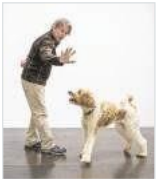
Have no treats in the signal
hand, and hold several treats
in your opposite hand, held to
the side or behind the back.
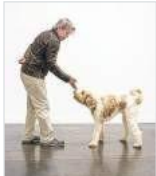 With your dog in stand, get
With your dog in stand, get
her attention with your signal
hand. Even though it no longer
holds a treat, your dog won’t
care, since she knows that
treats now come from your
opposite hand.
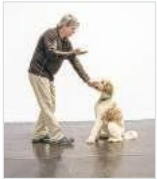
Give the hand signal and say,
“Sit.”
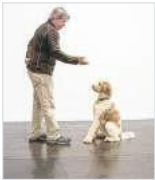
Once she’s in the sit, issue
your positive marker — “Good
sit” — and deliver the treat
from behind your back.
Random Schedules of Reinforcement
A central component of positive reinforcement–based learning is moving from a steady schedule of reinforcement
to a random schedule of reinforcement.
In part 1, you initially use a regular schedule of reinforcement. After each performance of a single command
like sit, your dog is rewarded with a treat. Then you ask your dog to complete a sequence of commands before
releasing a treat, which introduces a bit of randomness.
Once you start stage 3 hand signals, and you have successfully removed the treat from the signal hand, adopt a
random schedule of reinforcement. That means varying when you deliver a treat and the size of the reward. At this
point, don’t give a treat after every successful exercise, or only give a treat after several successful performances in a
row, and occasionally, such as when your dog hits a new level of performance with a concept she’s struggled with,
give her a “jackpot”: a special, high-quality treat or much more than normal.
Interestingly, this will actually increase your dog’s motivation significantly even though she is getting decreasing
treats for the same work. This is one of the core insights of “operant conditioning,” which behaviorist learning
theory brought to the world of dog training in the 1990s.
The powerful motivation generated by random schedules of reinforcement has been studied with scientific
precision in gambling. If a slot machine always spits out two quarters for every quarter someone puts in, this
doubles their money, but eventually this becomes so boring that people will quit despite doubling their money.
On the other hand, if a slot machine gives nothing the majority of the time, occasionally returns several
quarters, and once in a blue moon rewards someone with an avalanche of quarters, the person will sit there all day
long (or until they lose all their money).
That’s the power of a random schedule of reinforcement.
And you can harness that power when training your dog to get steadily improving levels of motivation and
performance even while thinning out the treats.
For instance, from now on, ask for three performances before delivering a treat, then five, then just two, and so
on. And when your dog does something really well, hit them with a rare avalanche of treats. Throughout the rest of
this book, continue to apply these principles to every new training context.
Sit to Down
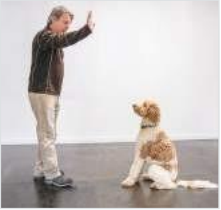
With your dog in sit, raise your signal hand
without holding a treat.
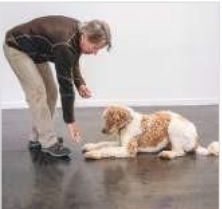
Say, “Down,” and sweep your hand down in
front of your dog’s nose and to the floor.
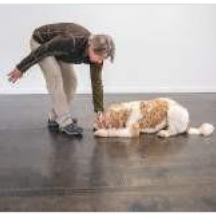
When she is down, say, “Good down,” and
deliver the treat between her feet from the
opposite hand.
Down to Sit
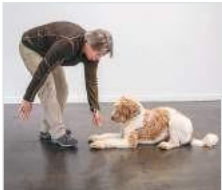
With your dog in down, get her attention
with your signal hand.
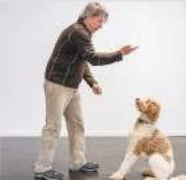
Sweep your hand up in front of her face
while saying, “Sit.”
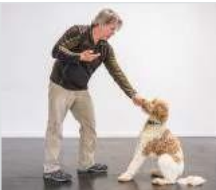
Once she’s in the correct position, deliver
the treat from your other hand and say,
“Good sit.”
Sit to Stand
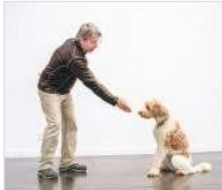
With your dog in sit, get her attention with
your signal hand. You can hold your thumb
in the middle of your palm to give the
impression that a treat might be there.
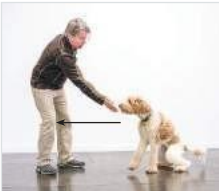
Sweep your hand, luring your dog forward,
while saying, “Stand.”

Once in stand, deliver your treat from
behind your back and say the positive
marker, “Good stand.”
Stand to Down
This exercise introduces a second hand signal for down — a large, sweeping motion in which your signal hand
starts relatively high over your dog’s head, then sweeps down in front of her face and to the ground. This sets
up the field hand signal for down — a hand raised straight over your head that your dog can see at a distance.
This is very useful when teaching down-stays, emergency stops, and distance downs.
It’s absolutely key in this exercise that your dog NOT sit on her way to the down. She should simply drop
straight into down. If your dog always has to sit before dropping into a down, it will be very difficult for her to
learn to do this at a distance out of a full run.
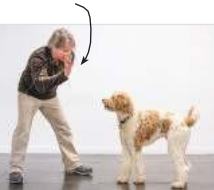

Sweep the hand down to the ground in front
of your dog’s nose while saying, “Down.”
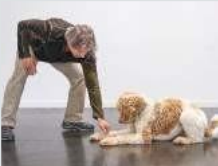
Once she’s down, deliver your treat onto
the ground from behind your back and
praise with your positive marker, “Good
down.”
Down to Stand
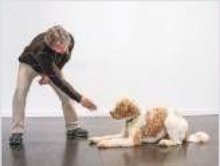
With your dog in down, get her attention
with your signal hand; you can center your
thumb in your palm to give the impression
of a possible hidden treat.
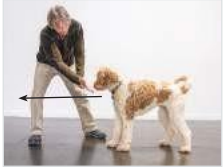
Move your hand forward while saying,
“Stand.” Be sure to keep the treat level
with her nose. If she cranes her head
backward, she will tend to sit instead.
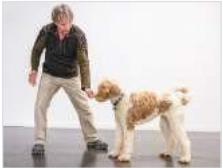
Once she’s in stand, deliver your treat from
the other hand and say, “Good stand.”
Note
In the three images above (and some others), notice that the opposite hand holding the treats is not
hidden behind the back. It doesn’t necessarily need to be, so long as the hand with the treats is not
distracting your dog from the signal hand. If she gets distracted, then move the treats behind your back.


